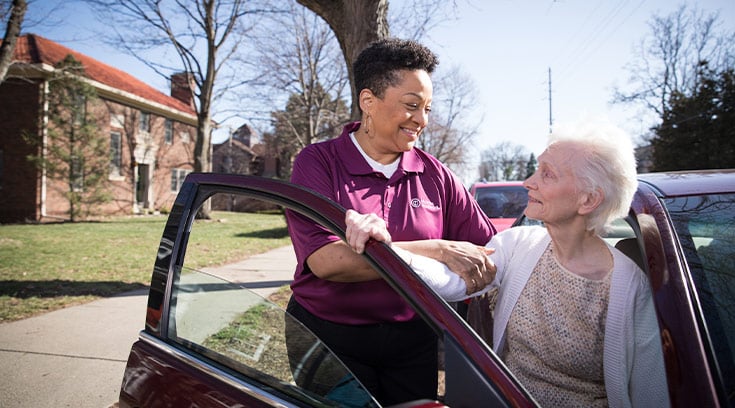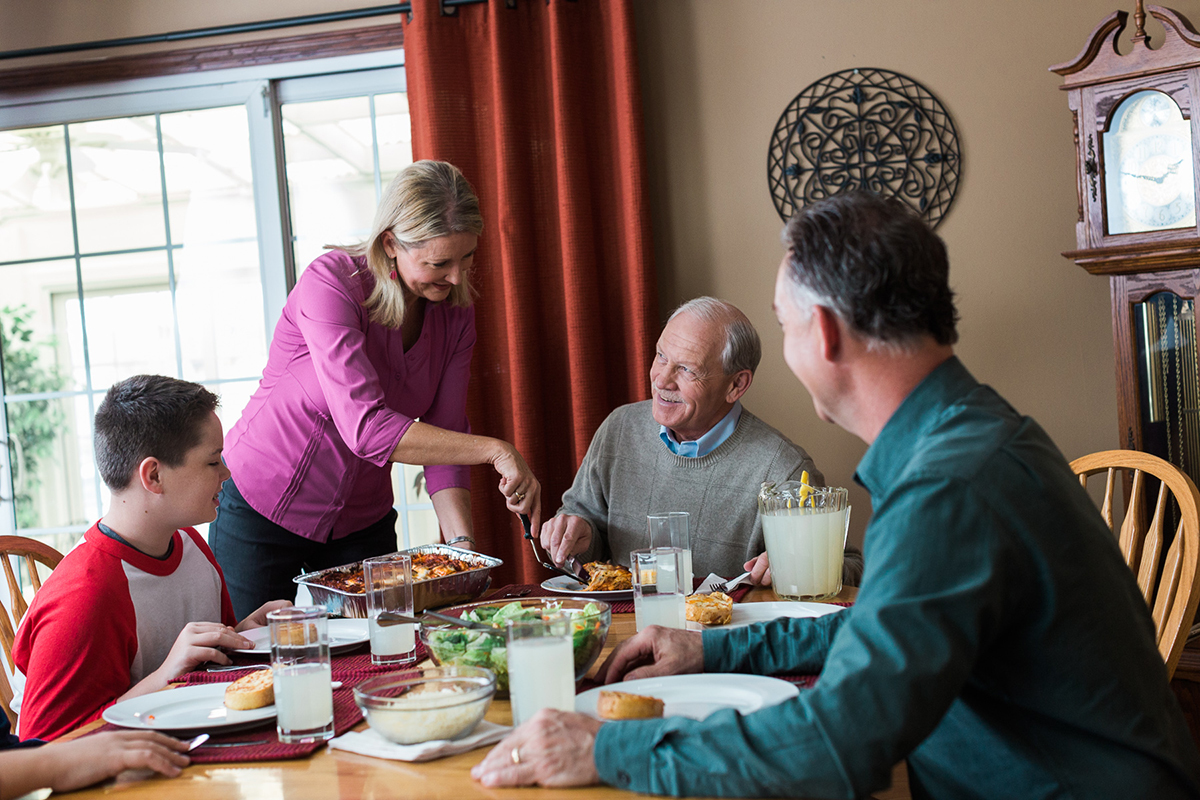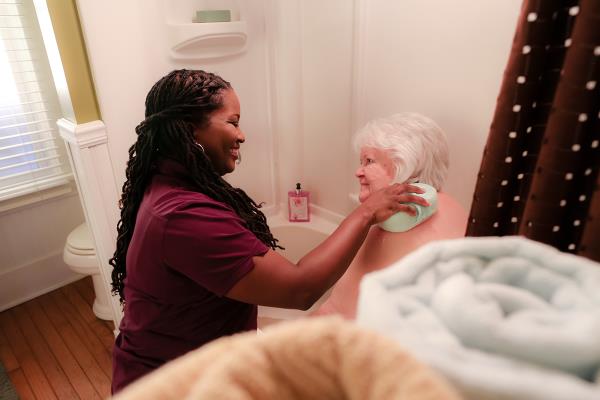When it comes to meeting their nutritional needs, older adults can face tough challenges. Issues like chronic diseases and dementia take their toll in ways that make staying healthy an effort for older adults and their family caregivers. Social isolation and loneliness create an even greater obstacle for many in this age group.
Research conducted by Home Instead, Inc. has shown that 75% of lonely older adults in the U.S. are not getting the right amount of at least one element of nutrition. In fact, those who identify as being lonely receive 157 fewer servings of fruits and vegetables than those who are socially connected.
While medical conditions can sometimes come into play when it comes to appetite and nutrition, nutritionist Shannon Muhs explains that there are often ways to help an older adult overcome this and maintain a healthy diet.
1. Involve older adults in a meal plan.
A person will be more likely to eat well if their menu includes nutritious foods that they like. Helping them create a plan every week can help maintain a schedule of preparing and eating good food. “Make a plan together,” Muhs said. “Handwrite or type it. If there’s no plan, they can’t hit the target. Put the list on the fridge or mirror. Be involved with shopping, either online or in person.” Include in the plan a way for loved ones to regularly get groceries, whether it’s through delivery or by curbside pickup.
2. Create a balanced menu.
“Think of the USDA MyPlate, a tool designed to show food group targets at each meal,” Muhs noted. “Half of your plate should be fruits and veggies. The other half of your plate should have a portion of whole grain and meat/seafood/protein. A cup of milk or milk alternative is the last food group target. You can personalize the portions for your loved one by considering the size of their fist. That is a good way to estimate correct portions of their body size; a fist-sized portion of a whole grain, and a palm-sized portion of a meat/seafood/protein are appropriate.”
3. Adapt healthy alternatives.
“A lot of the foods this generation grew up with, for example apple pie, may not be ‘allowed’ in an older adult’s meal plan due to a diagnosis or ailment,” Muhs noted. Consider cutting some calories in the recipe by slicing an apple and putting just a dab of butter and sugar on top, wrap in foil and put in the oven. You get all the yumminess that happens on the inside of the pie without the high calorie crust.
4. Avoid the extreme.
A family caregiver or companion may think too extreme with their health plan, Muhs noted. “Sometimes a caregiver thinks their loved one needs to avoid all grains and carbohydrates when they need to limit grains and carbohydrates. Total elimination can lead to low blood sugars and digestive problems.” For individuals who have heart disease or are overweight, 700 milligrams or less of sodium per larger meal is a good gauge. And some carbs are fine for diabetics. Include as many food groups as possible, but check with their doctor for a plan that is best suited to their diet.
5. Improvise.
Fruits and vegetables are particularly important to a healthy diet. While nutritionists often focus on fresh ingredients, canned and frozen foods can be healthy options as well. Fresh may not be as readily accessible for older adults who don’t live close to their loved ones or who may not have the ability to get groceries as often. “Canned is an acceptable option,” Muhs said.
6. Enhance the flavor of foods.
While access to nutritious foods is important, so too is flavoring food, such as veggies, to improve taste. While many older adults may be watching their weight or have dietary restrictions, Muhs advises that it’s OK to put butter or a light tub margarine on vegetables to make them taste good. A light tub margarine provides less saturated fats for those with heart disease, she added. Why not experiment with herbs as well? Check out this guide to matching herbs and spices with the right veggies.
7. Encourage healthy snacks.
Three meals a day isn’t always an option for older adults, Muhs noted. Supplement meals with healthy snacks such as a peanut butter and jelly sandwich, fresh or canned fruit chunks, veggie sticks with a light ranch dip, cheese and crackers, or a wheat tortilla roll-up with turkey, lettuce and cheese.
8. Make companionship a priority.
Food is a social experience that is often enhanced by companionship. Lack of that could pose nutritional risks for older adults, Muhs said. Facetime calls or Zoom meetings, or use of Grand Pad during mealtimes could help an older adult feel less isolated.
Meals can be a great time to reminisce, even if it’s from a distance, noted Home Instead Inc., Gerontologist and Caregiver Advocate Lakelyn Eichenberger. “Ask your loved ones about the foods they grew up with or how the super markets have changed over time. Or make the same meal – such as spaghetti – ahead of time, enjoy it together virtually and share recipes.”.
Check out these healthy recipes for inspiration and to reconnect around the dinner table.
Compassionate Home Care





